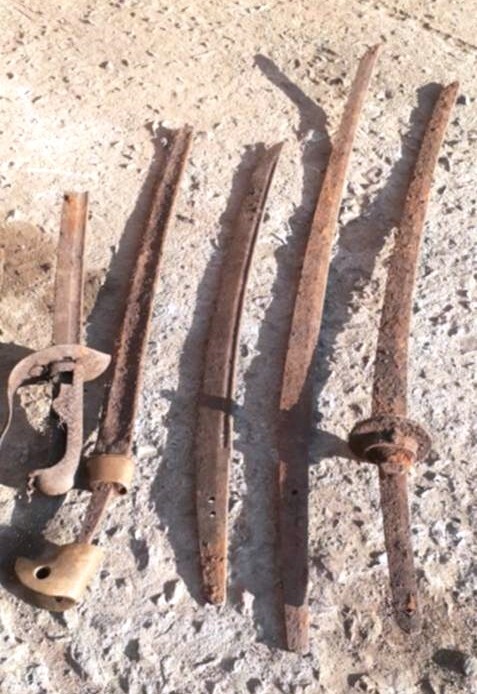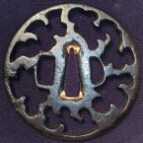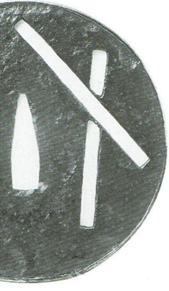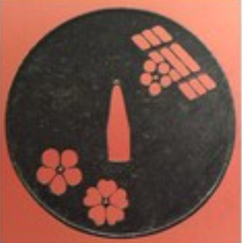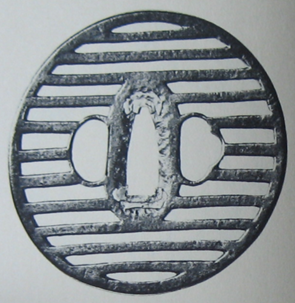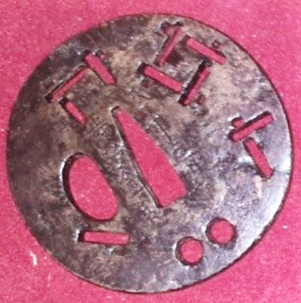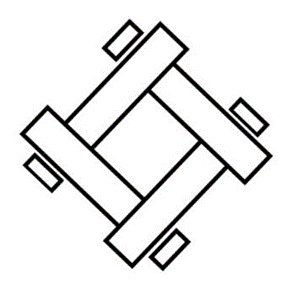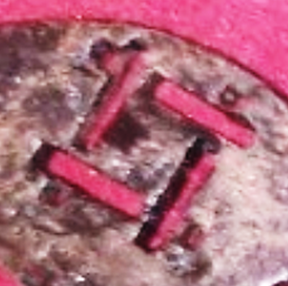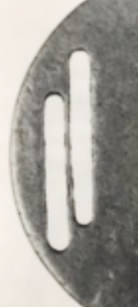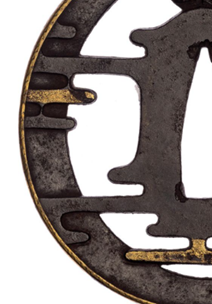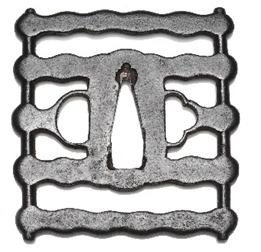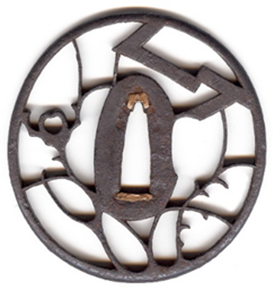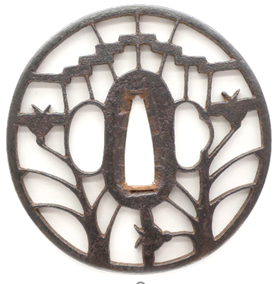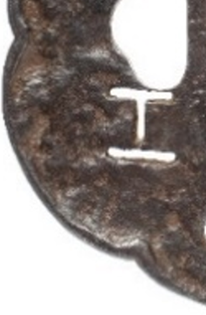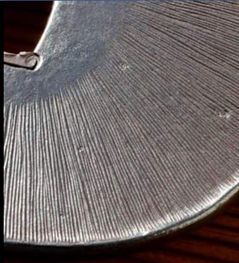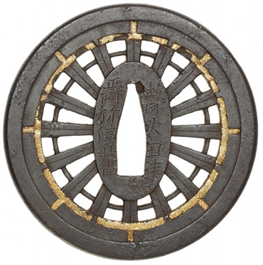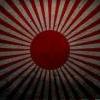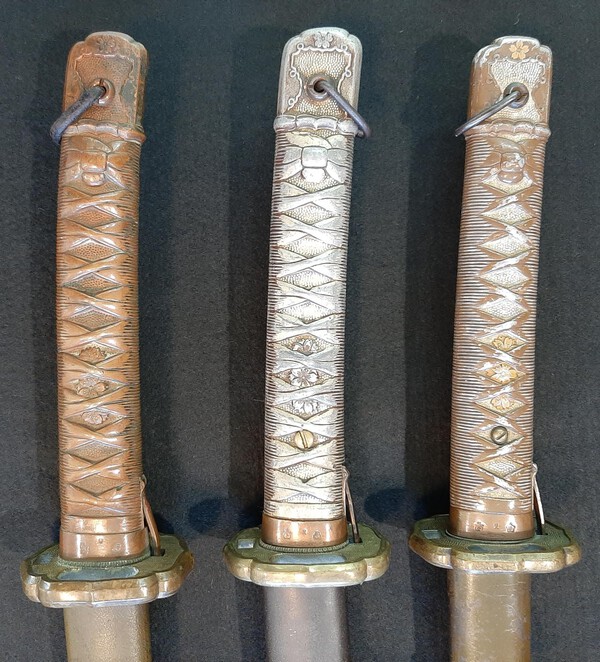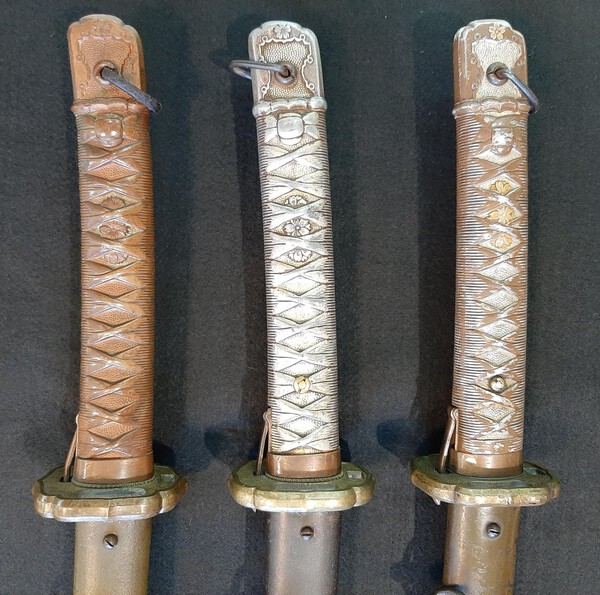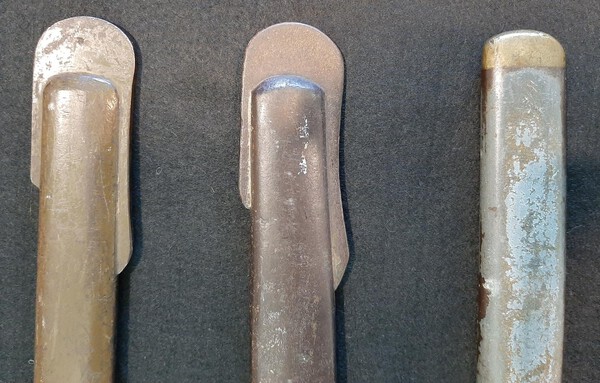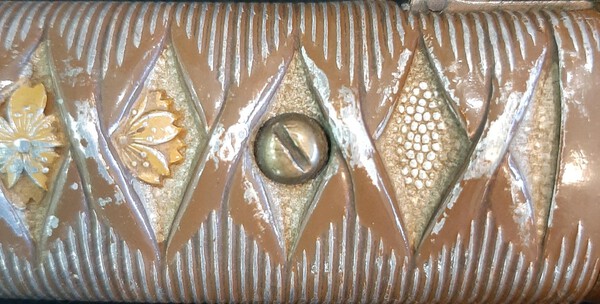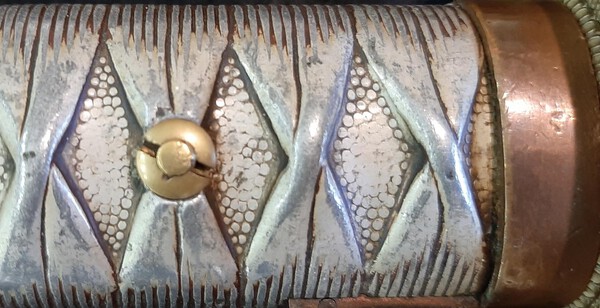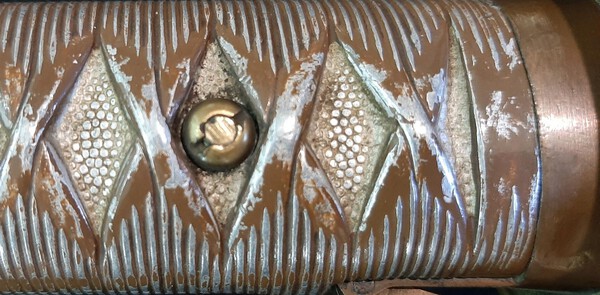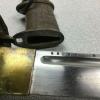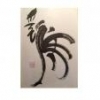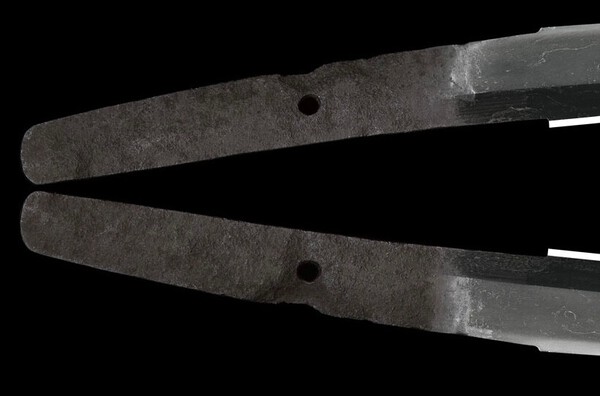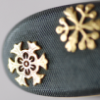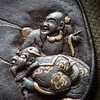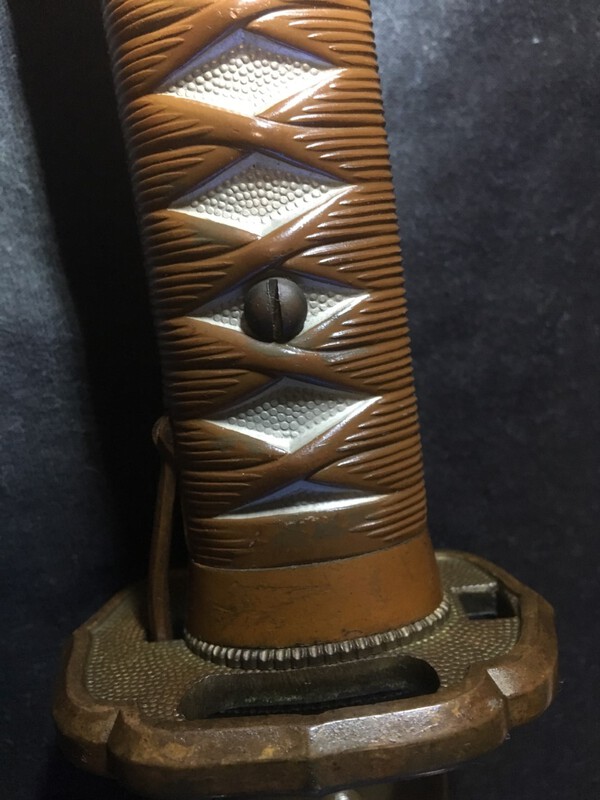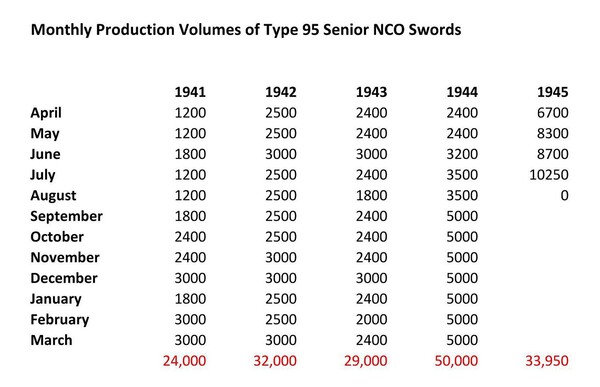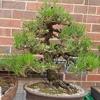Leaderboard
Popular Content
Showing content with the highest reputation on 01/21/2022 in all areas
-
4 points
-
Thanks Brian , No I don't believe that there is any such requirement. My understanding is that if I took the piece to Japan I would continue to own it but would not be able to take it back out of the country unless I had received permission to do so before I took it in . When these missing pieces have turned up in the past there has been no push by the Japanese government for them to be returned so I don't think it is an issue The Treaty of San Francisco which was signed by Japan and the US in 1951 contains provisions recognizing the validity of dispositions of property made pursuant to directions of the US Military government . As the swords were handed in on the directions of the occupying forces this treaty , I think , validates our possession of swords handed in during the occupation. Article 19(d) of the treaty also recognizes the validity of all acts and omissions done during the occupation under or in consequence of directives of the occupation authorities ( ie the SCAPIN's requiring the swords to be handed in ) and waives Japans right to take action for those acts or omissions. Ian Brooks3 points
-
2 points
-
I know the feeling! I still have the sword from my dad, but he’s gone now and I never asked him how he got it. Wish I had. Well, there are plenty of both kinds to be found these days. You should pick up one or two and get hooked to the hobby like the rest of us!2 points
-
Hi Charles thanks, I will. My anticipation for my first nihonto is through the roof. Just waiting for the export papers.2 points
-
Also the one at the bottom of the picture in civillian mounts missing the tsuka ito has potential.2 points
-
The very, very straight bare blade is interesting only because I have a wrecked, beat-up blade just like it. No mei, no nothing, it has been a puzzle. BaZZa.2 points
-
BEAMS/BARS/STICKS MOTIF SUMMARY (updated) These associations are not absolutes, and should be evaluated in the context of a specific tsuba’s collection of design motifs. 1- Long skinny, 2 sticks, with square ends: JOGI (measuring sticks/rulers) 2- Thicker, 2 sticks, with square ends, side by side or crossing each other: HYOSHIGI 拍子木 (clappers/rhythm sticks)... which has connections to kabuki and battle signaling. 拍子木 Hyoshigi sticks/clappers, used to signal the start of battle; still used in Sumo timing today. Varieties are used by priests, and local fire patrols. The hyōshigi is a simple Japanese musical instrument, consisting of two pieces of hardwood or bamboo often connected by a thin ornamental rope. The clappers are played together or on the floor to create a cracking sound. Sometimes they are struck slowly at first, then faster and faster. Also very prevalent in kabuki. 3. If the sticks are stacked side by side (2 or more sticks), often with the ends nearly even relative to each other, and sometimes appear to be bound (b,c,d), or are also in the presence of a pole (b), or a flower motif (a,c,d): IKADA (raft) a) b) c) d) 4- I am not sure if these would look much different from #1 or #2, but presumably one or more sticks would be perfectly parallel and level or also involve some perpendicular sticks too: SANGI 算木(counting sticks) like these maybe: Owari tsuba from Sasano: "cross braces (Sangi)" This could be Sangi showing “steps 1,2,3,4”? 5- Four right angle sticks that form a box with overhanging tips: KAKINE (垣根). It represents a lattice barrier that signifies a sacred place. (researched by Dale) ....which is present in the tsuba shown in #4 (which may also represent SANGI) which is present in the tsuba shown in #4 which may also represent SANGI 6- arrangements of multiple bars, with some connected to form right angles: GENJI-MON which make reference to specific chapters in the 54 chapters of the Tale of Genji. 7- vertical parallel bars with with rounded ends (maybe a key feature here?), has two possible interpretations so far: a) NIBIKI (RISING MIST BANDS). This is how Sasano described these first two tsuba examples sold at Sotheby's. ...although "mist" is typically represented by horizontal bars that have a flowing connection to each other (third image below). b) SCHOLAR'S SCROLLS. Sergei Varshavsky suggested this alternate explanation for the VERTICAL BARS with rounded ends, by referring to descriptions in "Symbols of Japan", by Merilly Baird. VERTICAL AND SEPARATE: HORIZONTAL AND FLOWING: 8- two connected bars forming a right-angle shape, that can be either an “L” or “T” form. 9- rows of horizontal bars (usually wavy-sided) that overhang two non-wavy vertical bars at the left and right sides of the tsuba: HOSHINAMAKO (drying rack for sea cucumber) 10- more than two and up to 8, staggered "blocks", that are touching/connected (usually accompanied by some type of garden or pond motif): YATSUHASHI wood plank walking bridges 11- Tapered bars radiating outward from the center can be "rays of light" to represent the Sun’s rays (a,b) or the "glow of enlightenment" often shown in paintings of Buddha: these “AMIDA” rays are often filed or chiseled into the surface of the plate (c,d). a) b) c) d) 12- Bars radiating outward, with either parallel sides, or slightly tapered sides, can also be the spokes of a wagon wheel: GURUMA (wheel) 13- Does anyone know what these "I-beam" sukashi from Yamakichibei represent? THANKS TO THE INPUTS OF: Peter, Jean, Piers, Dale, Grev, Darrel, Mark, Roger, Mal, Brian, Glen.2 points
-
Hello everyone, A few months back Brian asked for an article regarding Pattern 5, 6, 7 and 8 following on from a lengthy thread. Were I to do that, I would be posting a small book. So instead, I am offering a smaller alternative, regarding one of the many variations to the eight main patterns recognised by collectors. I tend to keep information pretty close. I am offering this exert for two reasons: I would like some feedback regarding the information - is it interesting? Is it too detailed? Not enough detail? Is the format accessible? - constructive feedback would be appreciated Secondly, if you enjoy reading this article and learn anything, check out this thread http://www.militaria.co.za/nmb/topic/31297-gofundme-for-brian-send-him-to-dti-2020/ If it were not for the tireless efforts of Brian, most of us would be isolated and without the ability to draw on the vast array of knowledge and experience of the board. I ask you to consider making a small contribution to this thank you gift as a show of appreciation for providing a platform for sharing and learning. Transition Model Type 95 On the 5th of July 1938* the Pattern 1 Type 95 NCO sword was retired from production, to be replaced with the Pattern 2. There is a less documented ‘transitional model’ of sword which rests between the Pattern 1 and Pattern 2 Type 95, in which a number of differentiating details can be observed. Some of these are in line with the Pattern 1 and others the Pattern 2, but are distinct enough to warrant further discussion of this sword independently of the patterns, but with reference to each.. Foremost, the material used to cast the tsuka changes from copper to aluminium. Nick provides us with the following insight into this: “Since the outbreak of the China Incident in July 1937, copper and brass needed to be saved wherever possible, but luckily Japan had a comparatively generous supply of aluminium, so copper was replaced with aluminium throughout industrial production at this time. All copper coins were exchanged with aluminium ones and even the China Incident War Medal was considered for production in aluminium before settling on recycling old bronze coins.” This aluminium tsuka is often observed with a distinct brass/brown colouration, which is often and incorrectly mistaken for staining or patina. This is a thin layer of Almite, which was used to protect the aluminium from degradation. Once again, Nick has kindly provided an answer to the research community. Nick observes that: "Since 1923, the Japanese had been using Almite instead of aluminum, as aluminum corroded too quickly... Unless aluminum was in this color, it was not accepted as decent quality in the 1930s." A second retention screw was added to the tsuka to complement the sarute nut and better secure the blade to the tsuka. This presented a problem, as the cast Pattern 1 tsuka was designed to correctly replicate the tsukamaki of officer swords in the hineri maki style. As both sides of the tsuka are not ‘mirrored’, the drilling of the hole for the additional retention screw resulted in the screw piercing the sunken same diamond on one side but the protruding ito on the other. As one can imagine, this did not allow for the nut to securely engage a flat surface of the aluminium tsuka without a degree of protrusion on the obverse ito side. This was a less than ideal situation and the author observes that this second retention screw nut is often damaged on known examples, perhaps due to the exposed location? Another important detail to note is that the design of this screw differs to that which is used on the Pattern 2, 3 and 4 swords, which are, relatively speaking, consistent. The head of the screw is wider and also less protruding, lacking the dome shape of later screws and nuts. The tsuba on this transitional model continued to use the 11mm thick brass tsuba as per the Pattern 1, while the Pattern 2 introduced a thinner, 9mm brass tsuba*. Nick states that: “The only possible and likely reconciliation is that mixing of old and new specs occurred to use up remaining stock of old Tsubas and Seppas.” The author concedes that this may be the case and would explain the very limited number of this transitional pattern observed. The habaki of this transitional model continues to exhibit the open half where the mune-machi rests. This is a characteristic of the Pattern 1 which ends completely with the introduction of the Pattern 2. The leather sarute used on Pattern 1 swords (though most examples seen nowadays have been fitted with a wire replacement) was replaced by a triangular shaped wire sarute for this transitional model. To the author’s knowledge, there is no evidence that leather was ever employed. The reason for this change should be obvious to even the most unimaginative individual - excessive wear and lack of integrity of the leather sarute. The saya of the transitional model bears all the hallmarks of the Pattern 2 saya. The main difference observed between the Pattern 1 saya and the transitional model is the revised drag; from the copper plug to the well-known integral steel drag observed on the Pattern 2. The positioning of the suspension ring was not adjusted remaining 6.5cm from the bottom of the saya throat fitting. Though consistency of the positioning of the hanging ring appears to be lacking throughout the manufacturing of the Type 95, Pattern 2 suspension rings are usually situated 1cm higher at 5.5cm. It should be noted that the practice of undercoating the saya with a grey base-paint continued for the transitional model, with most known examples exhibiting minimal traces of the green/brown regulation outer layer, but often a generous amount of the grey base paint remains over the raw steel. These transitional swords exhibit a very limited serial number range. Pattern 1 swords have been observed by the author up to the 7,000 range, while the earliest Pattern 2 sword the author has observed begins in the 7900 range. We can then infer from this that there were likely less than one 800 of these transitional swords produced. As with the Pattern 1, these transitional swords are all stamped with the Suya and Kokura stamps on the fuchi and a To inspection mark on the blade, fuchi and saya throat.The transitional sword had a short run and Nick observes that: “On 24th June 1939, the tape wrap pattern for the grip was changed, so both sides had identical patterns and was easier to ensure a tight fit of the fuchi to the lower end of the grip.” There are of course exceptions and variations, but these will be covered elsewhere under the subcontractor and swords they pertain to. Index: *an asterisk denotest this information was obtained from the research of Nick Komiya, who very kindly allowed me to use his research in my work Italics denote an opinion, supposition or conjecture without any basis in documentation or evidence Patterns in order - 1 Copper handle, 2 Aluminium handle - brass tsuba, 3 Aluminium handle - iron tsuba, 4 Aluminium handle - side latch, 5, Wooden handle- steel saya, 6 Wooden handle - wooden saya, 7 Wooden ring handle, 8 Ito wrapped handle1 point
-
Maybe not appropriate for this forum, but after learning a bit about the matchlock gun my father-in-law acquired in post war Japan, I started watching YouTube videos and surfing the internet for information about his other war stories and memorabilia from the Pacific theater. He at one time had three swords he said were samurai swords he picked up during the battle of Manila. He earned 4 Purple Hearts so saw much battle with the Japanese. One awful story he told was how he came upon a Japanese soldier who had lined up nuns and was beheading them. He shot the soldier and took the sword. He and my husband always thought they were real samurai swords but my reading about them after joining this site reveals they weren’t. Regardless, I wish we still had them. Unfortunately, during his many moves in the military they disappeared.1 point
-
1 point
-
The waiting is the hardest part. On my last blade my heart sank every time I looked at the tracking information to see the package sitting in Anchorage, AK every day for three whole days.1 point
-
Welcome Victor, I always find it interesting to see where these swords end up. I would expect to find more German WW2 items than Pacific WW2 items? Interesting sword, glad you shared it with us.1 point
-
I read an article that said Swords used during WWII were modeled after the original samurai swords but not genuine. After I posted, I found another article that says what you said and made more sense. So I now wish even more that we had those swords just to study the history. My father-in-law only shared the story behind the one sword and now we can’t ask questions as he passed several years ago.1 point
-
You hardly ever see these for sale - but Sanmei suddenly has quite a range! Just wanted to put it out there for possible interested parties. Although they're mostly linked to sahari inlay (like Hazama) - only a few of these have that feature. http://www.sanmei.com/contents/en-us/d1.html1 point
-
He has had two of the non Sahari ones from the Owari Blue Book sell before. Whatever his source, they cornered the market on the non Sahari Kunitomo.1 point
-
Hi Adam, yes, suitable space is a real problem, also for me. Especially when you have to keep the peace at home 😉 Hmm, interesting “extension plate”. Such modifications are seldom seen! When it comes to the placement of the sode (like Piers suggested). Try to put the shoelace loops under the watagami and tie each sode to the stand, right above the shoulder bar (or directly together). This way, the largest portion of the laces will be hidden by the watagami and the kobire… Keep us updated!1 point
-
1 point
-
1 point
-
Bruce and George, this guy ? Ishido MITSUNOBU / TERUHIDE 光信/輝秀, Naval Swords Japan #2, page 49, you both read it!! No stamps, and not RJT.1 point
-
There are a few members here who sell them. In particular, there is a member who makes the pillows himself so it might be worth searching it up.1 point
-
Bruce P wrote: > I have the nakago photos of yours, Barry, but not of the whole gunto. I didn't know where to find the thread I got the pics from or I'd have posted the link. Here's what I have: Bruce et al I'm beyond shamed as I completely forgot I'd uploaded those photos!! Standard territory for this auld bloke ... I've put it closer to the top of the 'to do' pile in what passes for a brain ... BaZZa.1 point
-
Can never be too sure! Sarcasm and jesting doesn't always translate well online. But you'll also hear to not lay your swords on the floor. Have you invested in some sword pillows yet? If not, I highly suggest!1 point
-
1 point
-
Rule 1 of nihonto: Absolutely do not, ever, do any work to improve them yourself beyond what some gentle soap and water, high-purity isopropyl alcohol, and fresh oil can do. You will hear everyone tell you to not touch them with a buffing wheel of any kind. A polishing/buffing wheel can and will destroy nihonto.1 point
-
1 point
-
1 point
-
1 point
-
1 point
-
1 point
-
George, I have both of those, plus more, but I got them from your survey and don't have photos on file. If it's possible, I'd love to get the photos. Here are the charted numbers I have, like this on the mune. There seem to be a different stamping practice with the "1", "2", and "3" (there is a "6" on file too) combined with an arsenal stamp. My suspicion is something like "inspector 1" "inspector 2" or "inspection 1 or 2" because several blades are found with the same number + arsenal stamp. The larger numbers seem to have a different function, for they are nearly perfectly linear. Only a couple on record out of sequence. The Nagamitsu numbering seems to be in it's own class, tied to the smith. @george trotter - a question about the Mitsunobu(Teruhide) mei from one of your articles, in a kaigunto - Sesko only lists one Showa era Mitsunobu but he's not "Teruhide". And none of the older era Mitsunobu listed are Teruhide. Is it possible this guy is the Showa Kaneda Mitsuhiro (金田光弘), listed by Sesko and the Teruhide has some other significance? Sesko's was an RJT smith and that would align perfectly with the mune stamping practice we see with all the others. 1943, Feb Kanetoshi (RJT) – Gifu Na 30 on mune Star Simpleman, NMB RS 1944, May Masakuni (RJT) – Osada 78 on mune Star Trotter Survey 1944, Jun Masakuni (RJT) – Osaka 75 on mune Star Volker62, NMB RS 1944, Jul Tomonari (RJT) – Kobe Hyogo 24 on mune Star 1944, Aug Kunihide (RJT) – Kyoto 90 on mune Trotter Survey 1944, Aug Kunihide (RJT) – Kyoto 98 on mune Trotter Survey 1944, Aug Kunihide (RJT) – Kyoto 99 on mune Trotter Survey ND Mitsunobu(Teruhide) 707 on mune UniqueJapan.com; kaigunto ND Nagamitsu (RJT) イ313 on mune Ooitame; NMB, RS ND Nagamitsu (RJT) 695 on mune Spidersrule123,NMB,RS ND Nagamitsu (RJT) 2005 on mune Reeder, NMB ND Nagamitsu (RJT) 2205 on mune Roromush, NMB, RS ND Nagamitsu (RJT) 1 saka 3490 on mune Vajo; NMB ND Nagamitsu (RJT) 3973 on mune IJASWORDS, NMB broken heart seppa ND Nagamitsu (RJT) 1阪3991 on mune mauser99; NMB ND Toyo Knife Co; Shinbo “Bravely Brandish” 510 on mune; “S九” on mune Paul Griff, NMB; “10” on fittings1 point
-
Like most tsuba collectors I have acquired some rusty junk examples. One that I have been experimenting with is a circular plate tsuba, covered with rust when I bought it as ‘the freebie’ in a mixed lot. It is round (8.3 x 8.2 x 0.45 cm) depicting a Chinese landscape with figures next to huts and a boat on a lake. Probably not commercially worth having it professionally restored. My first stage was to clean the surface with cotton buds soaked in WD-40 to remove most of the red surface rust. I like WD-40 (the name stands for Water Displacement formula #40) as it was designed for the aerospace industry and seems to be able to seep in between the rust particles and the iron and loosens them enough to be wiped off with a cotton bud. At this stage the reverse side in particular seemed to have a grey-green colour and this led me to believe that a previous owner had removed the rust and patina with acid, or Cocoa-cola, but the exposed iron had rusted again. The little copper and silver tagazogan figures did come up nicely. After this and all liquid treatments I dry the tsuba with tissue (kitchen roll) and leave overnight on a hot radiator. My next stage was to use WD-40 and penetrating oil, separately, and an old electric toothbrush and this removed more light surface rust (you can see the rusty oils soaking into the kitchen roll) but did not seem to touch the heavy patches. My last stage was to try Renaissance Metal De-corroder, an amine complex of hydro-oxycarboxilic acid in aqueous solution at a pH of approximately 4.0 (i.e. slightly acidic), applied with a cotton bud. It is claimed that this material ruptures the bond between the base metal and corrosion layer, reducing iron oxide to sludge, which can be wiped away. Rust was certainly evident on the cotton bud, but a more liberal covering on the more corroded areas together with use of a piece of bone did not get down to base metal. As the tsuba was effectively junk I decided to try something more drastic. There were several heavily corroded areas and I dripped some De-corroder on these patches. I then placed the tsuba in a plastic box (CD case) to prevent the De-corroder drying out and left it overnight. The areas covered with De-corroder had swelled into a black jelly and wiping this off with cotton buds soaked in water revealed that the rust had been largely removed exposing the bare iron (see pics). I have not carried out this process any further, but I expect that I could end up with a rust free piece of shiny iron, which I would either protect using Renaissance wax polish, or try to repatinate. Please note that I am not recommending the use of De-corroder on areas of tsuba that still have some of the original patina. I have not tried it, but I would expect that long exposure would result in the patina being removed as well as the rust. Remember, rust and patina are both iron oxides. However, this product does appear to remove rust from iron while leaving the underlying metal untouched, which is more that can be said for use of hard abrasives or steel picks. Best regards, John Pic 1 and 2 Before cleaning Pic 3 and 4 After WD-40, penetrating oil with electric toothbrush Pic 4 and 5 before and after De-corroder1 point
-
Sorry I’m a bit late getting into this discussion (poor vision due to cataract surgery). Simply put, my philosophy when it comes to rust on iron tsuba is that if it is outside the seppadai and can be easily removed with cotton wool, wooden toothpicks and oils, then do so. IMHO Iron rust scabs allow moisture to remain trapped and if salts (from the general environment, sweat, etc) have also found their way in the iron is going to continue to rust. Harder objects like ivory, bone and antler may be used for stubborn spots, but nothing harder than that. I don’t understand why Jim Gilbert has an aversion against cleaning sukashi piercings. Swords are repolished to remove rust, paintings are stripped of old varnish, museums clean their exhibits. What is special about tsuba? While I would not clean sukashi with a file, sandpaper or steel pick (which would damage the patina and expose bare iron), I regularly use a wooden toothpick with a small piece of cotton wool attached or a tooth flossing brush (see pics) with a bit of WD-40 to remove loose (red) rust and general detritus. Why would anyone want to leave rust, bellybutton fluff etc. (possibly impregnated with soy sauce or other corrosive chemicals) within the piercings? Most of my sukashi tsuba were obtained from old collections and have obviously been neglected. I would remind those non-chemists amongst you that the black and brown patinas found on iron tsuba are essentially the same thing as rust (iron oxides). However, patinas are created in a controlled fashion so that the oxide forms a tight bond with the iron hindering further corrosion. When bare iron corrodes the rust does not adhere strongly, flaking off, exposing more iron which continues to oxide. Moisture and ionic chemicals, e.g. salt, getting trapped in the rust will accelerate corrosion. Remember, rust never sleeps, but removing moisture and salts will slow its progress. To illustrate, attached is a senbikizaru (1000 monkey) tsuba that had a lot of loose red rust in the sukashi. I cleaned it using just a toothpick wrapped in cotton wool and a dental flossing brush with WD-40. I don’t think that I have damaged the remaining patina. If I find signs of rust reappearing I will repeat the treatment and apply a thin coating of Renaissance wax polish, using a cocktail stick wrapped in cotton wool, which is claimed to be used in many museums. Best regards, John1 point
-
1 point
-
Smith is Fujiyasu Masahira. Still alive and still working. https://youtu.be/rPQn9DsDcWg1 point
-
1 point
-
Bruce. You can't leave it like that. It will only get worse. No choice now! You are the custodian, so roll up those sleeves. Gently does it...1 point
-
Antler and bone are primarily ossein, and have a Mohs hardness of around 5. Ivory, tusk and tooth are primarily dentin, and have a Mohs hardness of around 3.5. Horns and claws are made up primarily of keratin (the protein found in hair, fingernails, and animal hooves), surrounding a core of live bone. Keratin has a Mohs hardness of around 2.5.1 point
-
Nice Glen. It's very gratifying. I sometimes bring a tsuba to work or while watching TV or whatever, along with some ivory (I find that sometimes antler has some harder inclusions that can scratch patina). The time goes by faster and there is less suffering if I am distracted by a lecture or a film or whatever.1 point
-
Welcome Paz! Be sure to post photos of your sword when it arrives. It is an unforgivable sin on this board to talk about new acquisitions without posting pictures. Welcome to this exciting hobby.1 point
-
Another theory is to buy whatever you like early on then once you know what you exactly want it's easy to sell off what doesn't match.1 point
-
I have a lot of stuff but dont want to sell something. Now i dont want to buy new because i had a lot of stuff. Dilemma.1 point
-
https://www.militaria.co.za/nmb/files/file/69-a-recent-acquisition-the-lost-norishige/1 point
-
I briefly touched on this, but Rob has provided a better example of what MAY have happened. "Can I believe that after a battle that a NCO with a damaged sword/saya collected one from a deceased and used that? Absolutely." Arsenal seems the least likely scenario to me. I agree that battlefield grabs/savage from both sides seems more likely. I don't think that the idea of dealers mixing parts up is far fetched though. That happened/s with fittings all the time, matching up the 'best' parts to make a more attractive sword. I'm not sure matching numbers mattered as much in the good ol' days as now. It's probably a good mix of all three. Salvage during the war, dealers and collectors post, which has resulted in mismatched examples. Would love to see some actually evidence, but that's the best supposition gets for now.1 point
-
1 point
-
I was going to speculate that the un-fullered blades came toward the end of the war. I read somewhere that since they were under pressure to crank out more blades (they went from an average of 2,400 blades per month to 5,000 in '44, to 6,000, then 8,000, to 10,000 in August of '45), the fuller was dropped to save time. BUT, seeing the fullered "late-war" wooden handled blades makes me wonder about that theory.1 point
-
Mark, It's in a guest bedroom. Doesn't fit in my office because of the bookshelves/desks/statues/swords etc.., wife won't let me put it in the living room and it gets too much direct light anyways. The side in the guest bed is on my wife's side though. So my guests will have to determine who sleeps next to him....0 points
-
I have to ask; is the armour on your side of the bed or your partner's?0 points
-
0 points
-
I write this post with great sadness as on Thursday evening Tomoko's husband Kyohei was taken from us after battling covid for a number of weeks. Kyohei was one of the kindest and most honorable people I was lucky enough to meet. We practiced iai and kenjutsu together regularly and I will always see him not only as one of my dearest friends but as my brother and sensei. We also enjoyed bonsai together. Today I am getting together with Tomoko to help with funeral arrangements and I will give the best wishes and condolences on behalf of Nmb and the members who have dealt with Tomoko in regards to her excellent sword bags. I dont know if anyone has any orders placed with Tomoko at the moment but im sure she will honor any business transaction but if there is any small delay please be patient . Thank you0 points



.thumb.jpg.bc10b59027a00aa142dce0349f3ba9e0.jpg)



